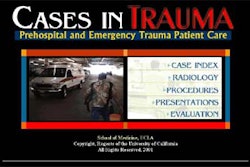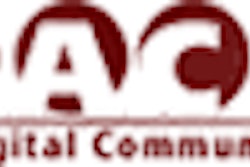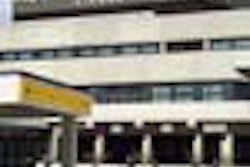AuntMinnie.com is pleased to present a two-part article on making the transition from radiology residency to practice, contributed by Drs. Douglas P. Beall and C. Darren Duvall. This article addresses the intermediary path from residency to practice.
Congratulations! You’re back from Louisville and most likely have passed the American Board of Radiology Oral Examination, which has been the primary focus of your attention for the past few months. Now you can reintroduce yourself to your family and to see what other parts of your life have survived the pre-boards neglect.
After such an intense experience, you're also probably looking forward to a four- to six-week break before you begin your fellowship, or maybe that job that you selected the previous fall. Despite the excitement and relief that accompanies a successful attempt at board certification, your respite will be brief. You are about to begin a complex process: the transition to practice.
The next few weeks are a time to gather the resources you need to make the transition as easy as possible. Here are a few pointers on what you’ll need and ways to ease the transition out of residency.
Paperwork
Between you and your final employment destination stands a legion of people with forms to fill out. Although the venerable American Board of Radiology has certified you as a radiologist, you must now obtain credentials from your new hospital(s), managed care insurance companies, preferred provider organizations, and a variety of other organizations -- including the state medical board, if you're moving to a new state.
This process is designed to make sure you are who you say you are and have trained to the level you say you have. Fortunately, many of these people want similar information, and many of these documents should already be in your possession. Others will be provided to you during the exit process.
Organization is absolutely necessary to successfully navigate the paperwork jungle. If you have engaged in locum tenens (moonlighting) work during your residency, some of this will be familiar, and you'll have already collected several of these documents. The pile is sure to grow, so we recommend a filing system to ensure that you will be able to easily retrieve the necessary documents when you need them.
The documents include:
- Medical school diploma
- Board certification certificate
- Internship training certificate
- Residency training certificate
- Fellowship training certificate (if you have one)
- Drug Enforcement Administration license
- State controlled substances permit
- BLS/ACLS Certificate (BLS is usually required/ACLS is recommended)
- Birth certificate or other citizenship/immigration papers
- State license and current permit (varies from state to state)
- Medicare unique physician identifier number (UPIN) (if you have one)
- Reference letters from other physicians (usually three individuals)
If you have access to a notary at your program and are staying in the same state, make notarized copies of your diploma, board certification, and birth certificate (or other citizenship papers) before you have them framed. That way, you can produce notarized copies of these documents prior to becoming established at your new practice or at your new fellowship.
If you are moving to a new state and require a new license, it's important to start the process as soon as possible. The medical license application process usually takes three to six months or more, and some states have specific requirements that require advance preparation.
Other documentation you need comes from your program, and will vary depending on your mode of practice and the modalities you will cover. Although mammography is the only subspecialty that requires a specific number of examinations to be interpreted prior to residency completion, the Accreditation Council for Graduate Medical Education (ACGME) program requirements state that each resident must have documented, supervised experience in various interventional procedures. This may include, but is not limited to, embolization and infusion procedures, image-guided biopsies, drainage procedures, noncoronary angioplasty, and percutaneous introduction techniques.
Residents are required to maintain a record (electronic or written), in which they document the performance, interpretation, and complications of vascular, interventional, and invasive procedures.
Your program director or subspecialty instructors should provide you with letters detailing your level of training in:
- Mammography
- Stereotactic breast biopsy
- Vascular ultrasound
- Obstetrical ultrasound
- Interventional procedures
- Nuclear medicine (including both diagnostic and therapeutic indications)
- MRI
- Conscious sedation (if appropriate)
It's a good idea to have as many modalities documented as possible to maximize your options. In addition to being useful for certification purposes, documentation of modality experience will help your former residency program demonstrate its compliance with modality exposure requirements. These guidelines specifically state that the residents must have training and experience in plain film interpretation, CT, MRI, ultrasonography, angiography, and nuclear medicine examinations related to cardiovascular disease.
When possible, the resident director should document the exact number of cases you have participated in, particularly for nuclear medicine, mammography, and stereotactic breast biopsy. These records should also document the number of months spent in each field and the approximate number of cases seen per unit time (i.e. per week or per month).
As stated previously, you should have been documenting these numbers yourself during the course of your training, but adequately organized radiology and hospital information system databases should also be able to produce these numbers for you quickly and accurately. It is useful for residents to persuade their programs to provide them with a list of their procedures by current procedural terminology (CPT) code (minus patient identification) at various intervals throughout the residency. This will facilitate an accurate and up-to-date documentation method that requires little time investment by the resident.
Mammography
In order to meet the requirements of the Food and Drug Administration’s Mammography Quality Standards Act (MQSA), a resident must have at least three months of training in the interpretation of mammograms, including instruction in radiation physics, radiation effects, and radiation protection. The requirements also state that the resident must have read or interpreted (under the direct supervision of an interpreting physician) mammograms from the examinations of at least 240 patients within a six-month period.
If the resident passed the certifying board examination in diagnostic radiology at the first allowable time (i.e. the earliest time a resident is eligible to take the board certification exam), the six-month period could have been any time within the last two years of the residency program. If a resident conditions any section of the oral board examination and wishes to read mammography, the individual must read 240 mammograms in the six months preceding his departure from residency.
As a form of insurance, senior residents may want to be sure they read 240 mammograms before the board and before the end of residency. If the resident has not, and he conditions any section of the oral board examination, he must read an additional 240 mammograms prior to his final day of residency. To abide by the final regulations of the MQSA, the resident must present a letter from their residency program director to their mammography facility. An example of such a letter can be found on the Food and Drug Administration’s Web site.
By Douglas P. Beall and C. Darren DuvallAuntMinnie.com contributing writers
June 14, 2001
Join us tomorrow for Part II: Intellectual property and general housekeeping
Dr. Douglas P. Beall is a fellow in the department of radiology, division of musculoskeletal imaging at the Mayo Clinic in Rochester, MN. He also served as the division chief of interventional procedures at the Sheppard Air Force Base in Texas. Dr. Beall is the author of Program Requirements for Residency Education in Diagnostic Radiology and several publications in AuntMinnie.com’s Residents Digital Community.
Dr. C. Darren Duvall is a general radiologist and a partner in Radiology Consultants, PA, a private practice in Paris, TX. He is a graduate of Texas A&M University Health Science Center College of Medicine in College Station, TX, and completed his residency training at Scott and White Medical Center in Temple, TX. Dr. Duvall is a past president of the American Medical Association's Resident Physician Section.
Dr. Beall will host a live Web chat on "How to Get a Job" on AuntMinnie.com’s Residents Digital Community Discussion Group on Friday June 29 from 3-5 p.m. (CT).
Click here to post your comments about this story in our Residents Digital Community. Please include the headline of the article in your message.
Copyright © 2001 AuntMinnie.com



















